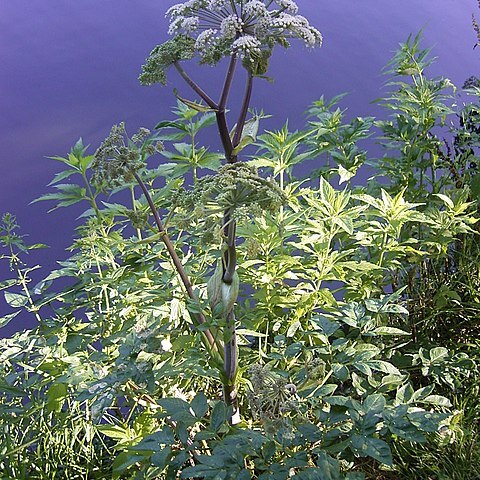Herbs, biennial or perennial. Root often stout, conic or cylindric. Leaves petiolate, petiole sheaths conspicuously inflated; blade 1–4-pinnate or 1–3-ternate-pinnate. Umbels compound, terminal and lateral; bracts many or a few, rarely absent; rays many to several; bracteoles many or a few, entire. Calyx teeth obsolete or ovate-triangular. Petals white, rarely pink or dark purple, ovate to obovate, apex incurved. Stylopodium short-conic. Fruit ovoid to orbicular, dorsally compressed; dorsal ribs filiform, lateral ribs broad-or narrow-winged, separated when mature; vittae often 1–2 in each furrow, 2–4 on commissure. Seed face plane or slightly concave. Carpophore 2-cleft to base.
Fr oval, oblong, elliptic, or orbicular, usually flattened dorsally, the lateral and often also the dorsal ribs evidently winged, or the ribs sometimes all merely elevated and corky-thickened; carpophore bifid to the base; umbels very large, compound; bracts none or few and linear; rays many; umbellets densely many-fld; bractlets linear or filiform; sep minute or none; stylopodium broadly conic; pet in ours white or greenish-white; stout, taprooted, usually single-stemmed perennials with long-petioled, pinnately decompound basal lvs and progressively reduced upper lvs, the uppermost often bladeless, the lfls otherwise broad and toothed or cleft. 50, circumboreal
Plant dioec. or polygamous; umbels compound; primary rays us.∞; general involucre of few bracts, or 0; secondary us. ∞. Calyx-teeth minute or 0; petals white to greenish. Fr. dorsally much compressed; commissure broad; mericarps almost flat, with 2 broad marginal wings and 3 prominent dorsal ribs. Vittae various in number. Perennial herbs or subshrubs with us. ternately or pinnately compound lvs. Some 70 spp., mainly of northern hemisphere; the N.Z. spp. endemic.

